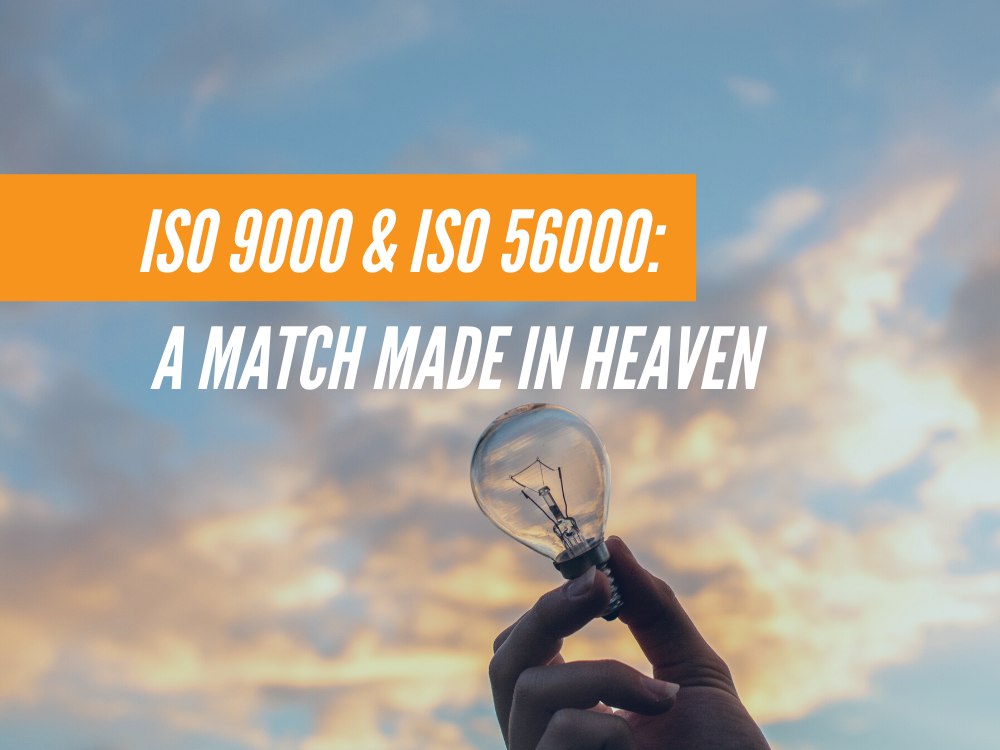Management systems build a business model that strengthens the ties between people, processes, and technology in an organization while still keeping some flexibility. Innovation management systems help your business grow and maintain a healthy culture of continuous innovation. Innovation itself can be ambiguous and difficult to measure. However, the ISO 56000 series for innovation management systems (IMS) standardizes the terminology, tools, methods, and interactions that enable and guide all types of innovations. Adopting this new standard for innovation management might require a digital transformation that your company has yet to discuss, but using this system jointly with ISO 9000 Standards on Quality Management Systems (QMS) both complements and improves quality management. So what exactly are the benefits of combining ISO 56000 and ISO 9000?
What is ISO 56000?
The goal of the ISO 56000 series of international standards on innovation management systems is to establish a strategic, structured, and standardized framework for continuous improvement and sustainable success. This provides guidance for all types of innovation and approaches to manage, track, and improve existing processes, services or products with much greater efficiency. Many companies are seeking help to better structure their innovation activities, and ISO 56000 is the solution. The framework provided by ISO 56000 helps to create a system of record for innovation. that drives consistent innovation and more cost-effective experimentation; creating a sustainable system requires the right solution that simplifies and automates the administration, tracking, management and reporting of innovation activities.
The Benefits of Using ISO 9000 with ISO 56000
ISO 56000 enables the integration of different ISO management systems, like ISO 9000. Activities like setting objectives, capturing data, and data analysis are all easily incorporated with the other ISO system. Not only do the systems work together, but ISO 56000 greatly improves ISO 9000. Many businesses have already implemented ISO 9000, which makes ISO 56000 an easy addition to integrate. Complementary to innovation activities, ISO 9000 sets a standard that ensures processes, products and services are up-to-date with customer requirements and expectations while also making sure their quality is continuously improved. For companies that have neither system at work, or are only certified for ISO 9000 QMS, it is worth putting them both into action to make the most out of your improvements. Not specific to any one industry, these systems can be used by any organization of any size.
One of the first steps in developing an innovation strategy is to identify the external and internal issues that affect the organization. To identify risks in your ISO 9000, a SWOT analysis can reveal weaknesses and threats. These weaknesses and threats provide the drive of your innovation management system. Issues are innovation opportunities, which can be structured and prioritized by a management system. The creative culture of innovation must coexist with the execution culture of your quality management for initiatives to be successful. Furthermore, establishing roles and responsibilities is considered a given in the ISO 9000 system. The ISO 56000 principles require leaders that are curious and forward thinking. When combined, the innovation initiative will need to outline innovation roles and their specific responsibilities.
Knowledge is an indispensable asset that both systems effectively manage and document within any given campaign or activity. Both systems prioritize awareness and communication, with ISO 56000 focusing on innovation activities and ISO 9000 managing intellectual property, ultimately allowing for the creation and recording of new knowledge for every solution developed, and all of which can be leveraged for future projects and campaigns. Analyzing and documenting the results from both a quality control and innovation perspective is key to continuous improvement. It is helpful to view ISO 9000 as the base set of requirements that your business should build on. From there, ISO 56000 adds next level innovation to what has been established through quality management.
ISO 56000 complements and improves ISO 9000 in more ways than one, as if they are the yin and yang of continuous innovation and quality assurance. Linking technology helps streamline any digital transformation by bringing together all of your processes to achieve a common goal. Using these systems together can bring greater benefits to your business. Learn more about the ISO 56000 Series of International Standards on Innovation Management.
Click here to watch our latest webinar highlighting the newly developed ISO 56000 series in Ushering a New Era for Innovation Management.

